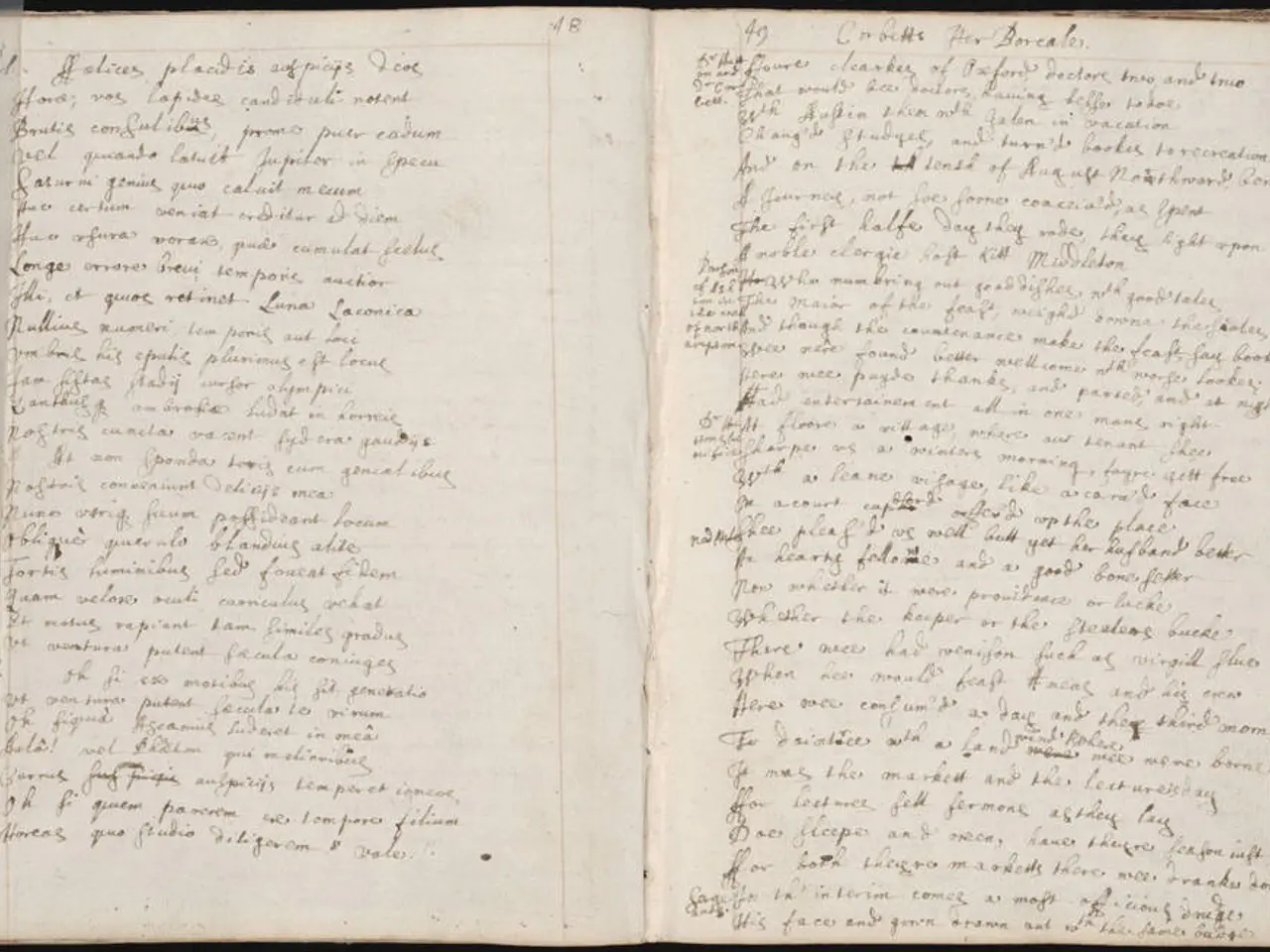Gensim and Scikit-learn utilized for Latent Dirichlet Allocation (LDA) and Topic Modeling exploration
In the realm of Natural Language Processing (NLP) and Deep Learning, Latent Dirichlet Allocation (LDA) stands as a widely-used generative probabilistic model, designed to uncover abstract topics within a collection of documents. This model, which represents each document as a mixture of topics, where each topic is a distribution over the vocabulary, is a cornerstone in the field of topic modeling [1][3].
The iterative process of LDA commences with an initialisation phase, where the model assigns topics to each word in every document randomly or using more sophisticated methods like those involving Large Language Models (LLMs) [1][3]. Parameters \( \alpha \) and \( \beta \) are also initialised, representing the prior probability of topics in a document and the prior probability of words in a topic, respectively [5].
The heart of LDA lies in Gibbs sampling, an iterative technique that refines the topic assignments for each word in the corpus. This process is repeated until convergence [5]. After each iteration, parameters \( \alpha \) and \( \beta \) are updated to reflect the new topic assignments and word distributions, ensuring that the model converges to a stable set of topics that best represent the data [5].
LDA optimises the distributions in text data by aiming to generate topics that are semantically coherent, reducing overfitting, and ensuring convergence [5]. The model improves coherence by generating topics where the words within a topic are related, reduces overfitting by using \( \alpha \) and \( \beta \) as priors, and converges to a stable set of topics through the iterative process of Gibbs sampling [5].
Recent research has explored enhancing LDA with LLMs, particularly in the initialization and post-correction phases. While LLM-guided initialization improves early iterations, it may not impact convergence. However, LLM-enabled post-correction can significantly improve topic coherence [1][3]. Pre-processing steps like lemmatization can also enhance the performance and accuracy of LDA models by reducing variations in word forms [5].
In essence, LDA breaks the initial larger word features matrix into two parts, reducing the features used to build the model. This technique, which decomposes the corpus document-word matrix into two parts: Document Topic Matrix and Topic Word Matrix, is a crucial aspect of LDA [1][3]. The end goal of LDA is to find the most optimal representation of the Document-Topic matrix and the Topic-Word matrix to find the most optimised Document-Topic distribution and Topic-Word distribution [1][3].
In the context of topic modeling, the Dirichlet model describes the pattern of words that repeat together and occur frequently, and these words are similar to each other [1]. The term "latent" in LDA refers to the hidden or concealed topics that are yet to be discovered [1].
The author, Neha Seth, is a Data Scientist at Larsen & Toubro Infotech (LTI) and has a Postgraduate Program in Data Science & Engineering from the Great Lakes Institute of Management. She can be reached on LinkedIn and has written other blogs for AV. This article references the Dirichlet Process by Yee Whye Teh, University College London.
LDA, like Principal Component Analysis (PCA), is a dimensionality reduction technique. However, while PCA finds the principal components that explain the most variance in the data, LDA finds the topics that explain the most about the structure of the data [1]. LDA makes two key assumptions: documents are a mixture of topics, and topics are a mixture of tokens (or words) [1].
References: [1] Blei, D. M., Ng, A. Y., & Jordan, M. I. (2003). Latent Dirichlet Allocation. Journal of Machine Learning Research, 3, 993–1022. [3] Teh, Y. W., Blei, D. M., & Jordan, M. I. (2006). A Gibbs sampler for α-stable topic models. Journal of Computational and Graphical Statistics, 15(3), 562–576. [5] Griffiths, T. L., Steyvers, M., & Ghahramani, Z. (2004). Finding structure with topics: Probabilistic topic models for large collections of documents. In Advances in neural information processing systems (pp. 1687–1694).
- In the realm of data and cloud computing, technology like Latent Dirichlet Allocation (LDA) in data science, particularly in the field of education and self-development through online education, is applied to uncover abstract topics within a collection of documents, thereby aiding in various aspects of learning.
- The iterative process of deep learning models, such as LDA, involves the use of Large Language Models (LLMs) not only for initializing parameters but also for post-correction to improve topic coherence, demonstrating the intersection of data science, technology, and education.
- LDA, like Principal Component Analysis (PCA), is a technique in data science used for dimensionality reduction, but while PCA focuses on variance, LDA centers around identifying the most significant topics that explain the structure of the data, thereby impacting both technology and education sectors.




